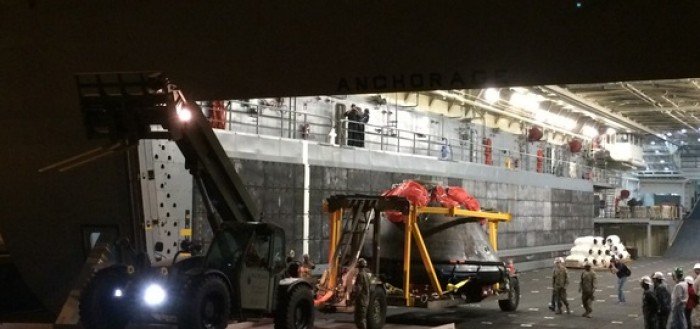After a successful trip into space the Exploration Flight Test-1 (EFT-1) of the Orion which blasted off from Florida’s Cape Canaveral Air Force Station and zoomed about 3,600 miles (5,800 kilometers) from Earth splashed down on Friday (Dec. 5) into the Pacific Ocean.
The space module was extracted from the ocean by the US Navy crew and boarded on the USS Anchorage and made a journey of 600 miles (966 kilometers) from the spot where it was retrieved. It was unloaded in San Diego on the 8th of December and will now start a very long 2 week journey to the Kennedy Space Center in Florida which is all the way on the other end of the East Coast. It will be transported on a special truck which will protect the Orion from the harsh weather and any sudden movements that may damage onboard sensors. Once in Florida, the NASA engineers will take the capsule apart to learn more about how its various systems performed during Friday’s unmanned space test.
The Orion won’t be making any further trips anytime soon either, its next scheduled launch is expected to be in 2017 and 2018. For the next 2 years the Engineers will be working hard to improve the Orion space module as the The 1,200 on-board sensors will provide them with an ocean of information about everything from the effects of space radiation on our avionics to the environment inside the crew cabin which will be used to improve the modules dynamics and internal environment.






